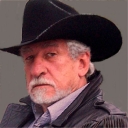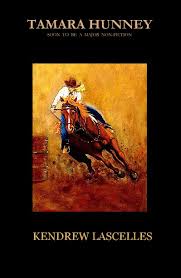Title: Tamara Hunney
Publisher: Blurb.com
ISBN: 9780615505183
Pages: 311, Paperback & Kindle
Genre: Fiction
Author Interview with Kendrew Lascelles
 Author Interview: Kendrew Lascelles
Author Interview: Kendrew Lascelles
Tamara Hunney
Interviewed by: Gary Sorkin, Pacific Book Review
PBR: Today we have the extraordinary pleasure of speaking with one of my favorite authors, poet, playwright, screenwriter and artist, Kendrew Lascelles. Kendrew, please accept my most sincere gratitude for sharing some time with us.
KL: The gratitude’s mine, Gary, I’m privileged and more than happy to share as much time with you as you wish.
PBR: There is so much to discuss, and on so many topics. My focus today is to lead toward questions regarding your novel, Tamara Hunney; A book I personally reviewed and frankly resonates in my mind as one of the best examples of creativity in contemporary literature. (For those of you reading this interview and not yet having had the experience of reading this amazing book, please refer to the review published at http://www.pacificbookreview.com/Tamara-Hunney.php) Please tell us, Kendrew, a little about how you came up with the characters and plot.
KL: The plot was born the morning of ‘nine eleven’ when I woke to the images of those low-life-piloted-planes flying into the twin towers. My mornings, then, were given to training rides on the 5 year old gelding I had purchased, and I had those images in mind when I saddled up and went up what’s known as Rattlesnake Canyon and along Skyline drive in Griffith Park, overlooking Los Angeles on one side (should one take the high trail’s south) and North Hollywood and the Valley, North. The latter being my view, with the skies unusually empty for that time of the day; because of the national groundings. The subsequent serenity, high above the thrum of the freeways, invested an awesome and somewhat foretelling mood to a stunned city. What, thought I, had we’d been E M P (electro-magnetic-pulse) into the dark ages, silenced, and everything was shutting down? The characters developed later, as horseback, once gas and machinery fails, exceeds walking. That, and the admixture of ridding America of the Ten Commandments, and the once-pockets of moral decline investing the country coast to coast, fostered the idea of a would-be teenage porn star encountering a hard-bitten Christian cowboy near four times her age as mentor, the future born out of the past as it were; the remaining action fell into place as I wrote thru 2004 on.
PBR: Do you feel the vision portrayed is in fact science fiction, or as your subtitle reads, “Soon to be a major non-fiction.”
KL: Unhappily, that catch-phrase, (soon to be a major motion picture, preceding many contemporary novels) rather than fading these passing years, yet illumines both my apprehensions and visions.
PBR: At the time when I read Tamara Hunney, I had no idea of your artistic talent in painting. Of course, now, thanks to your generosity, one of your paintings adorns our family room. Looking at the cover art for your book, I sense your hand and eye were responsible for this painting. Am I correct? Please tell us a bit more about your paintings.
KL: The cover’s my design, yes, but complied from mocked-up photo prints and formatted to book cover by Rod Dyer’s graphic house. I consider my painting a minor pastime in the brief periods of writer’s block, albeit your compliment’s humbly accepted, I am less than a mere novice in the painting disciplines.
PBR: To continue on a new path, please tell us a bit about your childhood, where you grew up, and what sorts of “things” you were most interested in as a youth.
KL: I was born in a suburb of Manchester, England, and raised in South Africa. My family traveled much of that country and my teen years were spent mainly in the farming districts outside Durban, where I was schooled and dropped out of Kearsney College, a few years prior to finals (high school dropout) and studied for the theater; my first role, in my late teens, was Oswald in King Lear, I was bloody awful, fortunately the rest of the cast was sufficiently magnificent to utterly obliterate my 25 seconds or so on stage. Nevertheless, I came away knowing every line of every actor in the piece and was (and still am) thoroughly mesmerized by The Bard; and toxic with the theater as a student, in London, prior to my 21st birthday, breathed the airs of Samuel Beckett’s Waiting For Godot (I played Lucky, in fact, in a Denver Center Theater production, a couple of decades back; perhaps one of my favorite roles ever) turning traditional theatrics on its head, and was as smitten with John Osborne, then Harold Pinter, Arthur Miller, Tennessee Williams, I could go on but suffice to say theatrical writing was my path to prose.
PBR: Who are some of your favorite authors, and what do you read when you’re not busy writing, painting or creating all that you do?
KL: Oh, I’ve jumped the gun, among those aforementioned, Aleksandr Solzenhitsyn, The Holy Bible, (not necessarily in this order) certainly Faulkner, definitely Cormac McCarthy, Sabastian Junger, Jane Smiley, Annie Proulx, Winston Churchill, Plutarch, Herodotus, Camille Paglia … (did I mention I once met Samuel Beckett, and once shared a table with John and Mrs. Steinbeck.) Oh, and Thomas Sanchez’ writing …. (also, I’m proud to say, an acquaintance.)
PBR: You certainly have had an illustrious past; having the pleasure of knowing many people of our culture and history. Who have been some of your friends or colleagues that have inspired you, and in what ways?
KL: Ah, tough question, before I was ten, perhaps six or seve, my mother took my elder sister and m’self to see Wuthering Heights, (Olivier as Heathcliff) BLOWN AWAY. Frank Loesser (Guys and Dolls) produced my show Wait A Minim (I say my as I co-authored and part-choreographed the piece with the late Frank Staff) on Broadway and much influenced my way into American theater. The late Leon Gluckman, who in fact played Lear those years before, was likewise a great influence, as he produced and Direct Wait A Minim at its Johannesburg conception in 1960. Bob Miller, a good friend, (who brought me his father’s FOCUS novel to write into a screenplay) and who directed two of my early plays (Trophy Hunters and Tigers) opened doors both theatrical and intellectual. Michael Butler is good friend, and influences me, albeit with a piece that fell short of its full potential. Earlier on, following Wait A Minim, Tom and Dick Smothers, helped me considerably and presented my reading of The Box on the Smothers Brothers Summer Show, (ABC) in the early 70’s; then the late Greg Garrison of the Dean Martin show, notwithstanding the excellent actors who subsequently brought my characters to life on stage; and I can’t not mention Susan Tyrrell and an equally stalwart friend, Bill Snell, who, with the photographer Jerry deWilde first produced Trophy Hunters and Tigers; nor neglect Donovan Marley, now retired artistic director of the Denver Center Theater Co, who produced an upgraded 2 act Trophy Hunters, and the following year my South African set play Exclusive Circles.
PBR: Tell us about your upcoming opening in Pittsburgh of your new play?
KL: The play’s based on my novel A Child’s Guide To Heresy, you so thoroughly reviewed in Pacific Book Review, and thus helped bring it to the attention, (as did Bob Miller) of Ron Lindblom, the artistic director of the Pittsburgh Playhouse, as well to Paul Hennigan, president of the theater – home at Point Park University. This truncation into a three act play opens the theater fall season on Sept 9th, and runs thru to the 25th. If anything, the script’s pretty tight, getting all that story into 3 acts, and I’m now trusting Bob Miller’s expertise, he’s a terrific director, in staging it as a thoroughly entertaining two-hours-or-so of theater; all one can hope and strive for; ENTERTAINING.
PBR: We certainly wish you the best of luck, and once again, thank you so much for taking the time to join us today.
KL: Again, the gratitude’s all mine, Gary, and the time spent most pleasurable. Later, my friend.
Read review of A Child’s Guide to Heresy
Read Tamara Hunney in the Author Spotlight
Read review of Tamara Hunney


